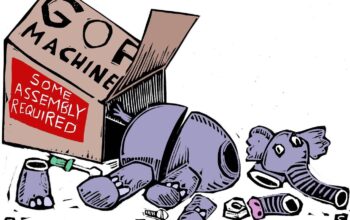Want to be a victim of a stalker? After April you can go to San Luis Obispo. At that time someone who spent about a year in jail—instead of four years and eight months, will be back on the streets. That is three years earlier.
“Josiah Johnstone was convicted of a felony count of stalking and felony criminal threats in San Luis Obispo County Superior Court on Jan. 28, 2020, in a case involving two of his ex-girlfriends who say their relationships with Johnstone ended in emotional and physical abuse. Although Johnstone was sentenced to four years and eight months in prison, he is now eligible for release in April and will not be required to go through a parole hearing, where a board determines whether an inmate is suitable for early release based on the inmate’s history, charges, and behavior.
Not even a parole hearing! Feel safe, not in SLO. Criminals first, make more victims. Any bets on how soon he continues his stalking?
Convicted SLO County stalker eligible for release in April
By Kasey Bubnash, New Times, 1/14/21 https://www.newtimesslo.com/sanluisobispo/convicted-slo-county-stalker-eligible-for-release-in-april/Content?oid=10502040
An Atascadero man accused of stalking, harassing, and abusing roughly 30 men and women will likely be released from prison in April of this year, almost three years earlier than his victims expected.
- CONVICTED Josiah Johnstone was convicted of a felony count of stalking and felony criminal threats in San Luis Obispo County Superior Court on Jan. 28, 2020.
Josiah Johnstone was convicted of a felony count of stalking and felony criminal threats in San Luis Obispo County Superior Court on Jan. 28, 2020, in a case involving two of his ex-girlfriends who say their relationships with Johnstone ended in emotional and physical abuse. Although Johnstone was sentenced to four years and eight months in prison, he is now eligible for release in April and will not be required to go through a parole hearing, where a board determines whether an inmate is suitable for early release based on the inmate’s history, charges, and behavior.
A part of Johnstone’s shortened stay in prison was expected. When he was convicted in January 2020, he had already collected 280 days of pre-sentence credits for time served in jail while awaiting sentencing, and then earned 18 days of post-sentencing credits while awaiting transfer to a state prison, shortening his sentence by just under a year.
But because the California Department of Corrections and Rehabilitation (CDCR) classifies Johnstone as a minimum-custody offender, he’s also eligible for credits that inmates can earn for exhibiting good behavior, like participating in rehabilitation and education programs and staying out of trouble. CDCR couldn’t legally say how many of these credits Johnstone has received so far while in Wasco State Prison.
Johnstone was also awarded 84 days of positive programming credits in July 2020 as part of a statewide effort to reduce prison populations amid the COVID-19 pandemic, according to CDCR. The pandemic forced prisons to temporarily suspend many credit-bearing programs, so all inmates who remained discipline free between March 1 and July 5 of last year were awarded 12 weeks of positive programming credits.
“By practicing positive behavior throughout this time of suspended visits, program modifications, staffing shortages, and service impacts,” former CDCR Secretary Ralph Diaz wrote in a July 2020 press release, “these inmates have played an important role in enabling staff to maintain institutional security and focus on providing care to those who are ill.”
Johnstone was initially arrested in September 2017 and posted bail in November of that year. On May 28, 2019, Johnstone pleaded no contest to the two felony charges he’s now serving time for. After Johnstone failed to appear at his initial sentencing hearings in July of 2019, a judge issued a warrant for his arrest. A bounty hunter found Johnstone in Nevada, where local law enforcement arrested him and brought him back to SLO.
A hearing on Oct. 17, 2019, ended in disappointment for Johnstone’s victims, when Judge Hernaldo Baltodano put off sentencing again and instead ordered Johnstone to participate in a 90-day mental health evaluation through the CDCR.
The evaluation, Baltodano said in court in October 2019, would help determine whether Johnstone should serve prison time or if he should be released on probation. At Johnstone’s sentencing in January 2020, Baltodano said the results were in, and the CDCR recommended Johnstone’s imprisonment.
Although there were only two women involved in the criminal case against Johnstone, at least six individuals in SLO County have been granted restraining orders against Johnstone and dozens of other women and men have come forward informally, many claiming that Johnstone stalked, harassed, threatened, and stole from them.
At the sentencing hearing in January 2020, Judge Baltodano said roughly eight people provided the court with victim impact statements regarding the alleged harassment and abuse they suffered at the hands of the defendant. Given those stories, the increasing severity of Johnstone’s issues with intimate partner violence, and his “limited insight into how his conduct impacted the two victims in this case,” as indicated by CDCR’s mental health evaluation, Baltodano said he could not let Johnstone out on probation.
If Johnstone is released in April, he will likely be on probation for three years and is ordered to stay away from the women involved in the criminal case and their families for 10 years. Δ



